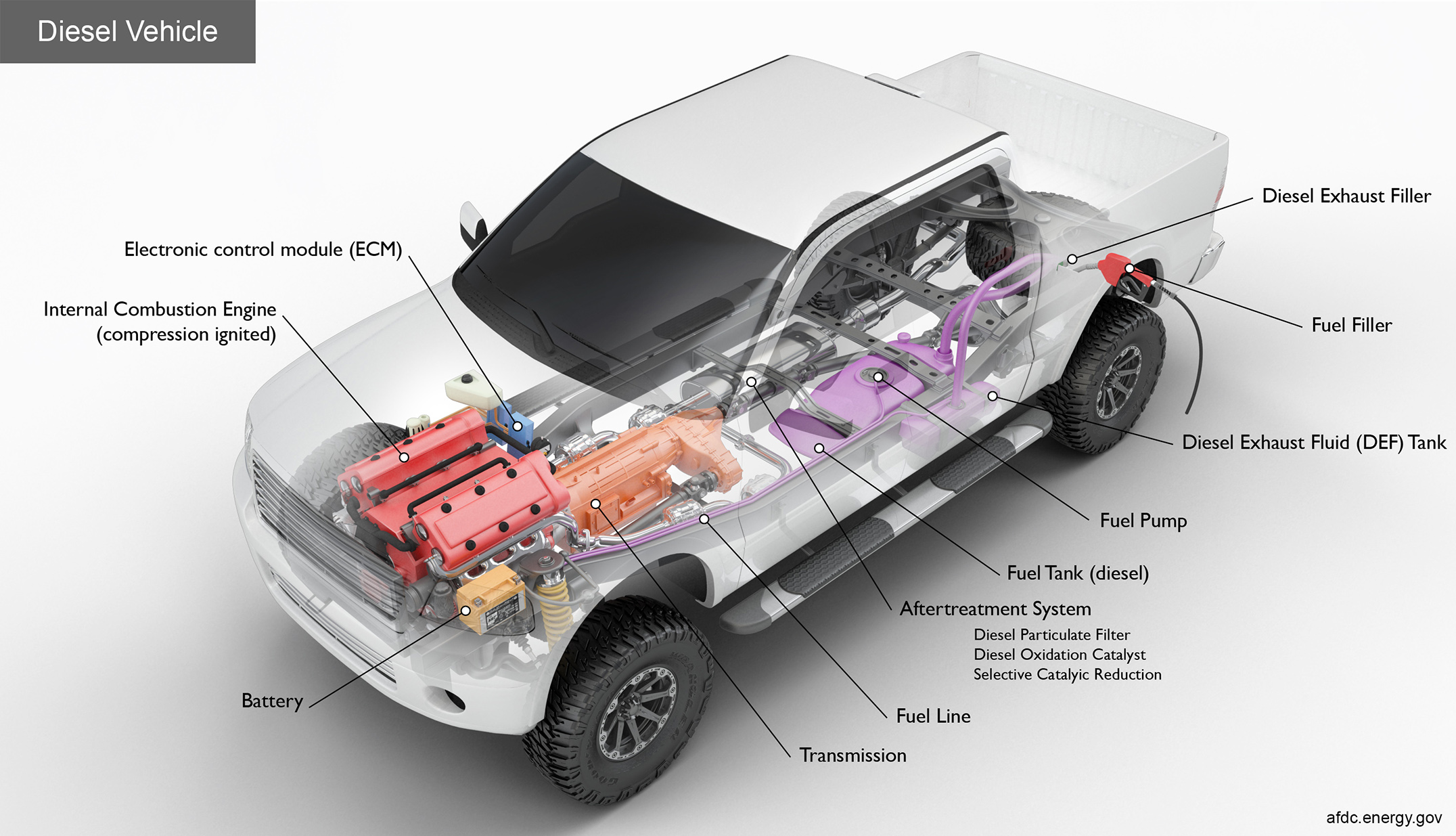How Do Diesel Vehicles Work?
Diesel vehicles are similar to gasoline vehicles because they both use internal combustion engines. One difference is that diesel engines have a compression-ignited injection system rather than the spark-ignited system used by most gasoline vehicles. In a compression-ignited system, the diesel fuel is injected into the combustion chamber of the engine and ignited by the high temperatures achieved when the gas is compressed by the engine piston. Unlike the emission control systems on gasoline vehicles, many diesel vehicles have additional aftertreatment components that reduce particulate matter and break down dangerous nitrogen oxide (NOx) emissions into harmless nitrogen and water. Diesel is a common transportation fuel, and several other fuel options use similar engine systems and components. Learn about alternative fuel options.
Key Components of a Light-Duty Diesel Vehicle
Aftertreatment system: This system is comprised of multiple components, which are responsible for filtering the engine exhaust gas to meet tailpipe emission requirements. After the exhaust gas of the engine is filtered through the diesel particulate filter (DPF) and the diesel oxidation catalyst to reduce particulate matter, diesel exhaust fluid (DEF) is injected into the exhaust gas mixture, then reduced to nitrogen and water by chemical conversion within the selective catalytic reducer (SCR) before being released into the atmosphere via the vehicle's tailpipe.
Battery: The battery provides electricity to start the engine and power vehicle electronics/accessories.
Diesel exhaust fluid (DEF) tank: This tank holds diesel exhaust fluid, an aqueous urea solution, which is injected into the exhaust stream during selective catalytic reduction.
Diesel exhaust fluid filler: This port is for filling the diesel exhaust fluid tank.
Electronic control module (ECM): The ECM controls the fuel mixture, ignition timing, and emissions system; monitors the operation of the vehicle; safeguards the engine from abuse; and detects and troubleshoots problems.
Fuel filler: A nozzle from a fuel dispenser attaches to the receptacle on the vehicle to fill the tank.
Fuel line: A metal tube or flexible hose (or a combination of these) transfers fuel from the tank to the engine's fuel injection system.
Fuel pump: A pump that transfers fuel from the tank to the engine's fuel injection system via the fuel line.
Fuel tank (diesel): Stores fuel on board the vehicle until it's needed to power the engine.
Internal combustion engine (compression-ignited): In this configuration, fuel is injected into the combustion chamber and ignited by the high temperature achieved when a gas is greatly compressed.
Transmission: The transmission transfers mechanical power from the engine and/or electric traction motor to drive the wheels.
Related Vehicles
